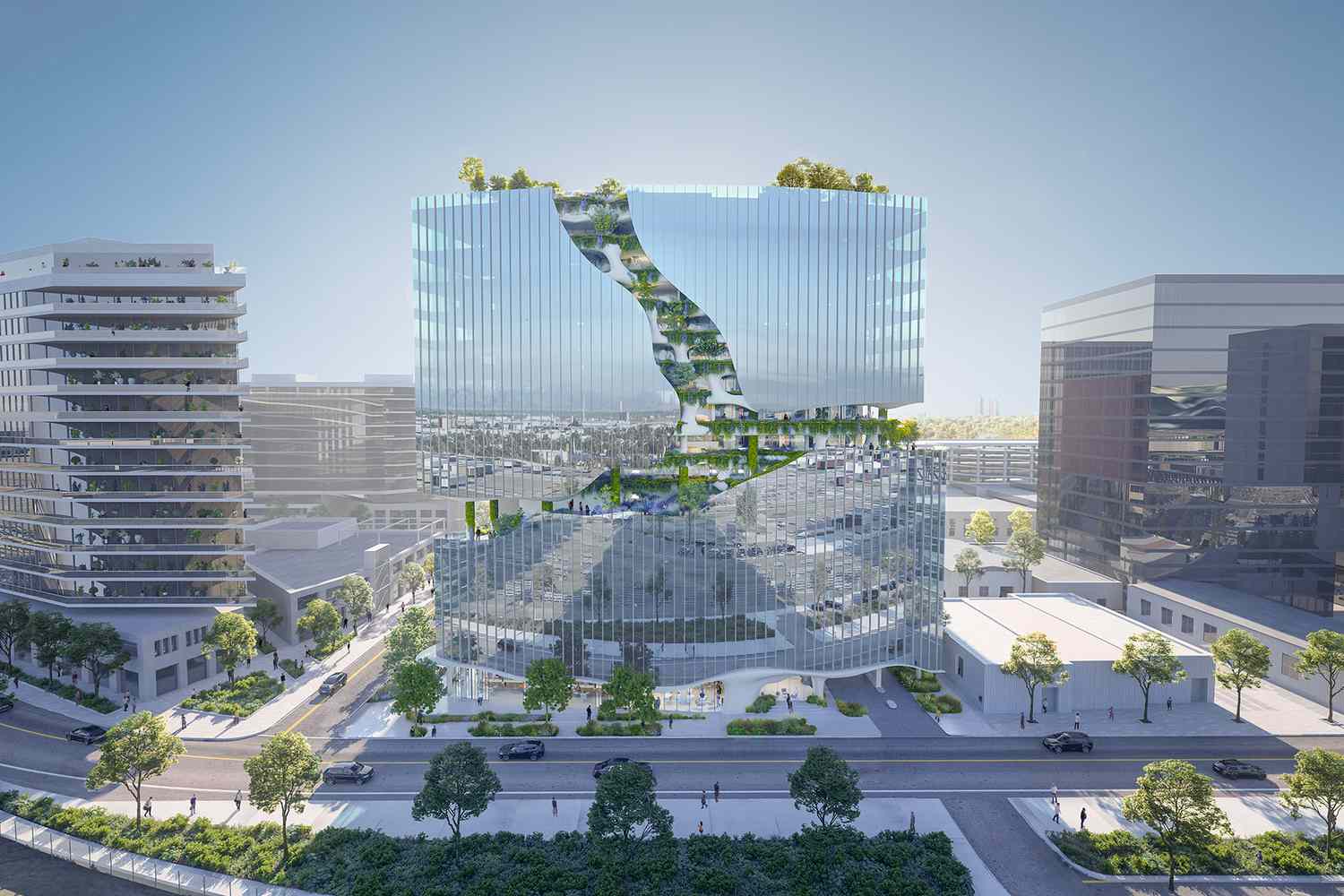
This aesthetic was inspired by a new skyscraper above being erected in Denver which will finish building in 2023. This new apartment building will incorporate a hiking trail within the building that scales from the bottom, all the way to the roof. This aesthetic incorporates our inherent human love of nature within a city setting.

As you can see, this intricate design allows for flourishing gardens with plants the size of small trees throughout the building. This allows outside viewers to see the beautiful internal landscaping, and a serene area for residents to hang-out or to enjoy a nature walk without leaving their apartment building. It creates a color dynamic within cities which often are mixes of black and grey skyscrapers with a hue of settled smog within the air around them.


The above buildings have been labeled “smog eating buildings” which not only are pretty to look at but increase the aesthetic of the entire city as they extract the smog and carbon from the air creating a cleaner and healthier airspace within the city. This effectively kills two birds with one stone, as it is both very environmentally friendly, aiding to offset the greenery lost during the construction of these cities, as well as a stylish form of architecture.

The above home shows the combination of a modern minimalist home with a roof composed of intricately landscaped grass in a non-urban setting. It shows a great combination of contrasting colors. The inclusion of greenery on top of a roof also has a number of beneficial effects such as increased insulation properties and longevity of your roof due to the decreased exposure to the elements.

This aesthetic is often referred to as biophilic designs which is an approach to architecture that looks to connect building occupants more closely to nature. The incorporation of greenery within and on buildings was likely introduced slowly over time following the introduction of city ‘commons’. Commons such as central park in NYC are popular among people living in urban areas, which led to the increased desire for gardens and green areas within other cities, and eventually into and on top of large-scale buildings. Another reason this came about was to combat the heavy smog and pollution which often comes with cities of large scale. These gardens provide urban populations to enjoy fresh air right from the source without leaving the city itself and decrease their exposure to harmful air pollution.
Works Cited:
Do you really know all the benefits of green roofs? Urbanscape. (2018, October 19). Retrieved January 31, 2023, from https://www.urbanscape-architecture.com/do-you-really-know-all-the-benefits-of-green-roofs/
Garfield, L. (n.d.). A smog-eating twisting tower that features luxury apartments will soon open in Taiwan – take a look inside. Business Insider. Retrieved January 31, 2023, from https://www.businessinsider.com/taiwan-smog-agora-garden-twisting-tower-vincent-callebaut-photos-2017-8
Ggwtv. (2022, December 14). Episode 122 – green roofs & rooftop gardens. Growing A Greener World®. Retrieved January 31, 2023, from https://www.growingagreenerworld.com/episode122/
Mitra, S. (2022, February 9). Architectural designs with green roofs that meet the needs of humans and nature alike! – yanko design. Yanko Design – Modern Industrial Design News. Retrieved January 31, 2023, from https://www.yankodesign.com/2021/04/18/architectural-designs-with-green-roofs-that-meet-the-needs-of-humans-and-nature-alike/
Zhekova, D. (2021, December 14). This glass building in Denver has a hiking trail built into the façade. Travel + Leisure. Retrieved January 31, 2023, from https://www.travelandleisure.com/culture-design/architecture-design/denver-new-residential-tower-has-trail-carved-into-facade
[/vc_column_text][/vc_column][/vc_row]

2 Comments. Leave new
This aesthetic looks as if it could be a positive shift for a lot of cities, but I wonder if the potential increased need for maintenance will reduce its popularity among new construction. Where do you see this going in the near future?
The use of different settings and locations where these green buildings are constructed is a very strong foundation of this post. It really allows the reader to see the continual growth of the green city aesthetic and how it affects the local communities/populations.
Do you believe that this green city aesthetic follows more biophilic or biomimetic values? (Takes the form or look of nature and uses it in building design? Or takes the function of certain elements in nature and uses that in the building design?)